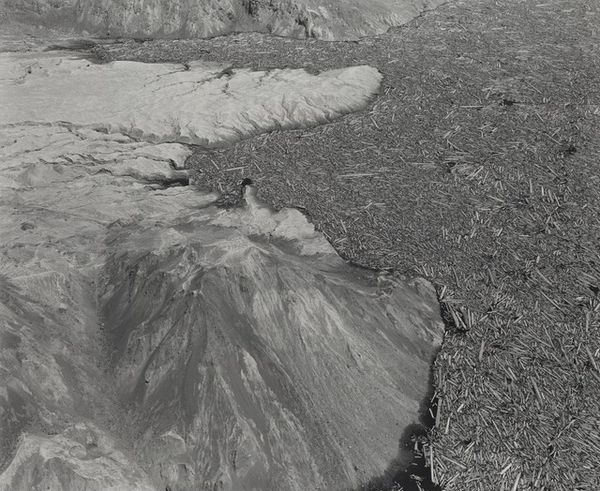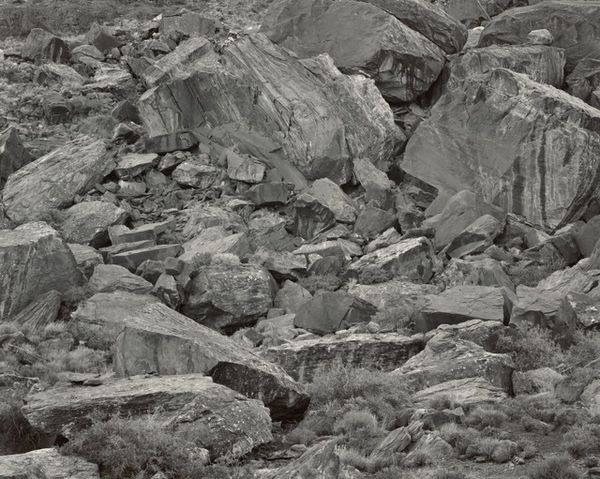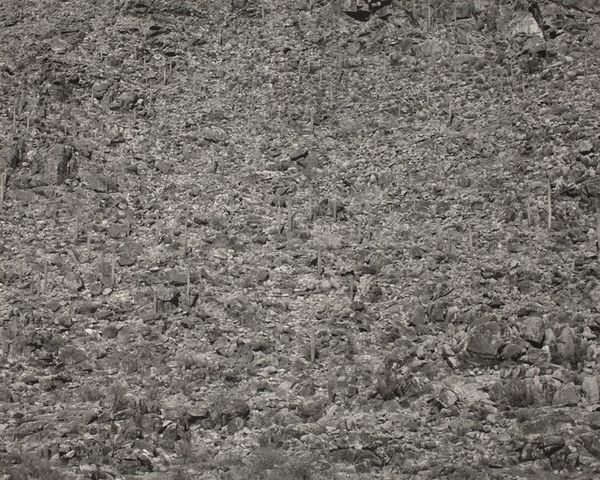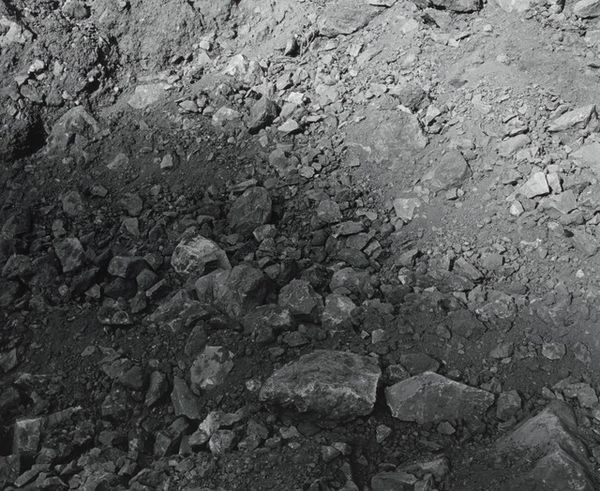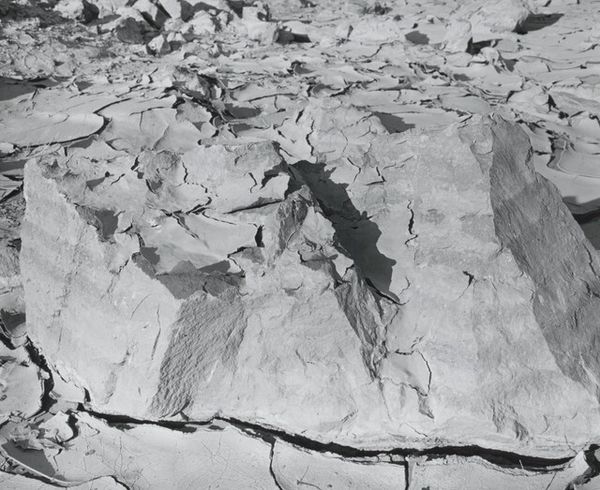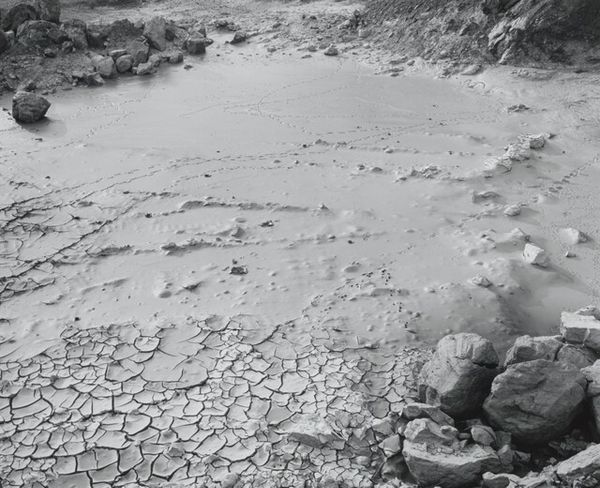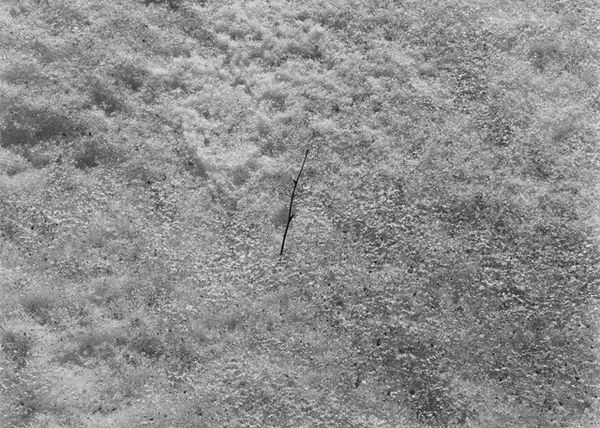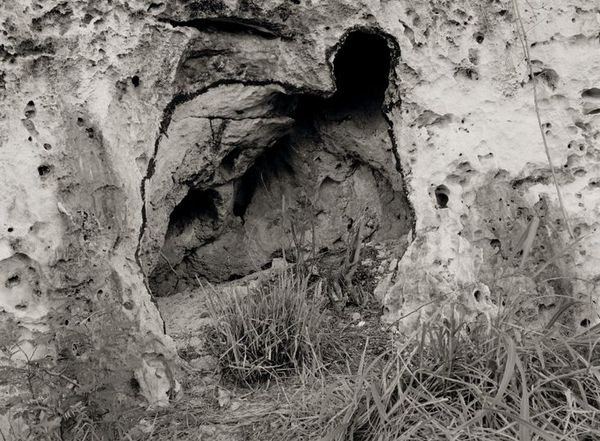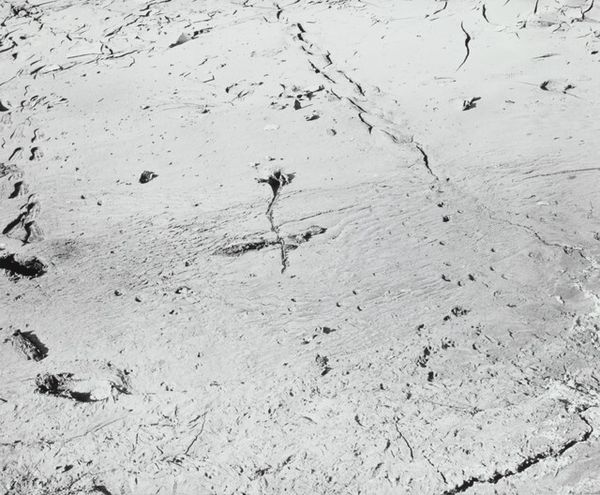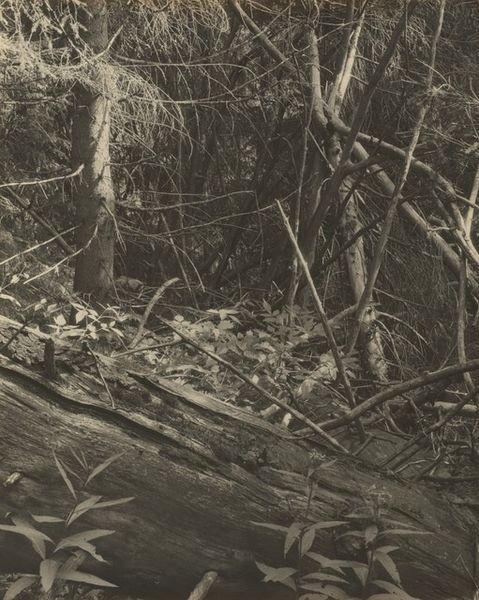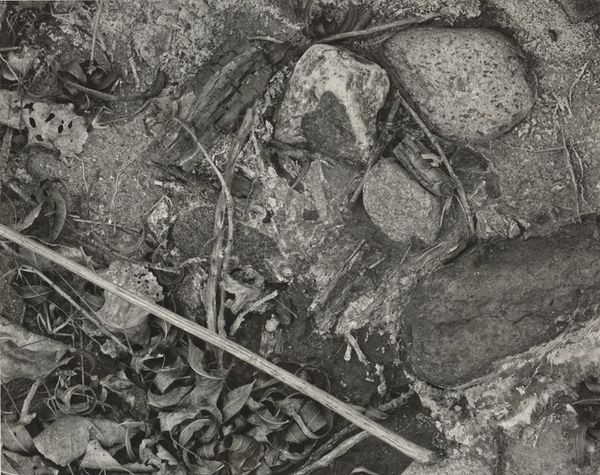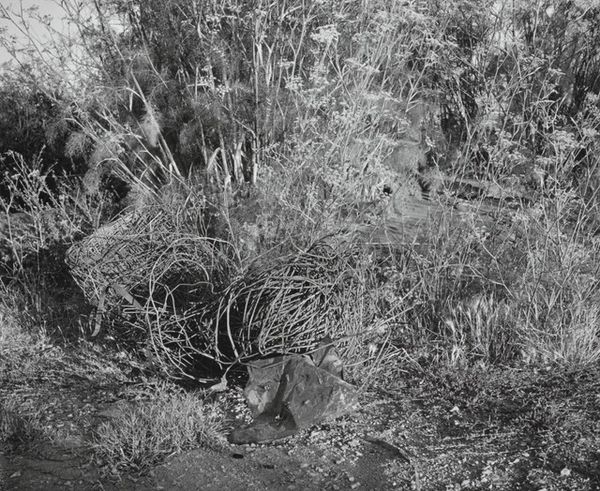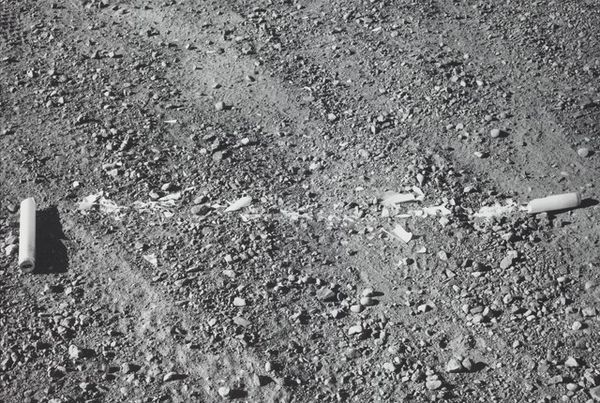
photography
landscape
street-photography
photography
Dimensions: image: 18.8 × 22.9 cm (7 3/8 × 9 in.) sheet: 20.32 × 25.4 cm (8 × 10 in.)
Copyright: National Gallery of Art: CC0 1.0
Curator: Let's discuss Lewis Baltz’s, San Quentin Point, no. 19, possibly created between 1982 and 1985. What’s your initial read on this landscape? Editor: Bleak. There’s an almost oppressive quality to the close-up on the rock formation. The stark contrast, the monochrome—it feels barren and devoid of hope. Curator: Baltz often used photography to explore themes of alienation and the impact of industrialization on the American landscape. It's difficult not to note the proximity to San Quentin Prison and its symbolism when considering Baltz's intention. Editor: You’re right. The sharp, almost violent angles in the rock—they evoke confinement. But formally, look at the way the light catches the ridges, carving out such sculptural forms within the frame. Curator: Indeed. There is almost no trace of human intervention in the landscape here, just the rock and what grows from it. He photographed tracts of land defined by their adjacency to industrial infrastructure; it is liminal space. This aesthetic captures the way power transforms these landscapes. Editor: So you're suggesting the 'no. 19' points to a series that comments on power structures? I’m struck by how the image abstracts its subject. It could almost be a microscopic view rather than a macro landscape shot. Curator: Exactly! The "New Topographics" movement embraced stark, unromantic depictions, challenging traditional landscape photography. Baltz pushed beyond aesthetics, though, his works invite us to consider social control of spaces. Editor: Even without knowing the specific social context, the tight composition draws attention to the rock itself. A raw and unyielding form in monochrome, creating a visceral effect. It becomes almost confrontational. Curator: Precisely. Through stark realism and formal restraint, Baltz reveals the complexities in the post-industrial world. Editor: Baltz certainly leaves you with plenty to contemplate about both form and context, doesn't he? Curator: Absolutely; the image stays with you, challenging your perspective long after you’ve seen it.
Comments
No comments
Be the first to comment and join the conversation on the ultimate creative platform.

